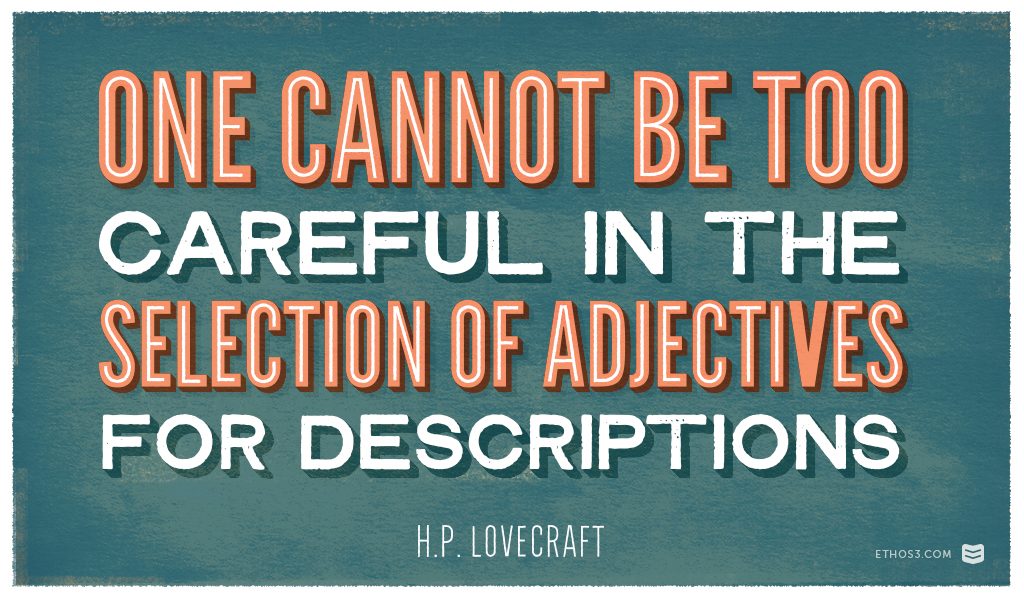So, you’ve finally sat down to write the storyboard of your presentation content. You have an example story of a client, a perilous journey, and an ending with a solid call-to-action in order to bring the journey to an end. In essence, you have the framework for a story, but still need to fill in the gaps with detail to bring it all together.
While we are proponents of minimal text on each slide and the use of large images, sometimes a written description can be a great way to color your main character, make your villain more terrifying, and add some excitement to your happy ending. Writers use detail to make their readers feel as if they’re experiencing the same sensations that the main character is experiencing.
A presentation differs from a traditional written story because you can accompany your text with both images and your verbal narrative. However, you can still use evocative language throughout to give your content a creative boost. Here are three ways to do it:
General Adjectives
Working with a few nouns? Why not throw in a single word adjective to enhance your characters, places, and things. Words like “dependable,” “clear,” “wise,” “modern,” and “important,” are examples of some positive descriptors, while “unclear,” “slow,” “difficult,” and “uncertain,” can be used to add weight to the existing problems introduced in your deck. A single adjective is great because it can accomplish a lot of work and provide context with only one word.

Setting
Building on the idea of adjectives for your nouns, creating a more complete vision of the presentation’s setting can help your audience relate to the text. Let’s say you want to create a completely energy efficient car. Why not take a few slides to describe a vision of the future with zero emissions? You could use slides that say “bright future,” “breathe in,” and so on to add context and provide a descriptive tagline for the setting itself.
Character Traits
Even in the realm of fiction, some authors forget to give their characters traits that show who they are rather than explicitly tell the reader. For example, you might want to describe your hero as an especially forgetful person. Why say that they are forgetful outright, when you can use a few slides that show how they keep missing deadlines, putting their keys in the fridge, and leaving the house without a jacket?
Description and detail put a concept in the reader’s mind without the reader needing to be explicitly instructed. Think about the difference between hearing the word “forest,” and the words “dark, dense forest filled with overgrown trees and buzzing insects.” Are you neglecting descriptive words? Move beyond the mere shell of a story by giving each of your nouns some additional detail. All you need is a word or two in order to add interest.
It’s also important to be wary of adding too many adjectives to your work. For each noun, one or two will do. Too many adjectives risk sounding like a romance novel, which is not something any presentation hopes to achieve.
Learn more storytelling tactics and techniques for your next presentation by checking out a few articles from our archives!
Why You Need a Hero’s Journey for Your Next Presentation
